We all understand that change doesn’t come easy. And accepting change is just as hard as fighting to have it in the first place. In all communities around the world, there are legal ways that have been put in place to help the members initiate change procedurally, i.e., in line with their norms. If you are looking to influence change in your community, one of the best ways to do so, is by filing a great petition. A petition is one of the best ways to show your support for a course and get the community’s attention and decision-makers. And a petition template can help you in making a petition and collecting the signatures.
In this article, we’ll be looking at what petitions are, their importance, usage of petition template, the things to consider when coming up with one, writing a great petition, and the steps you have to follow after drafting your petition. We shall also be providing you with free petition templates to help guide you through your writing of the petition.
Free Petition Templates
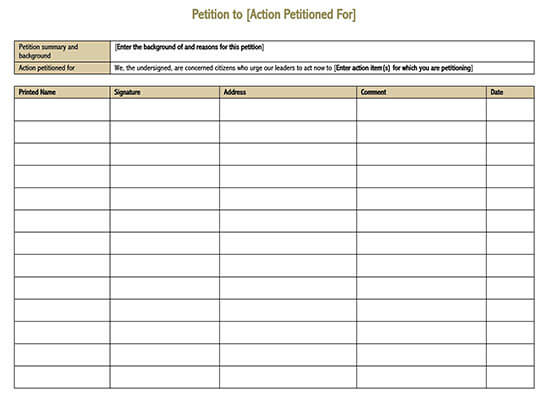

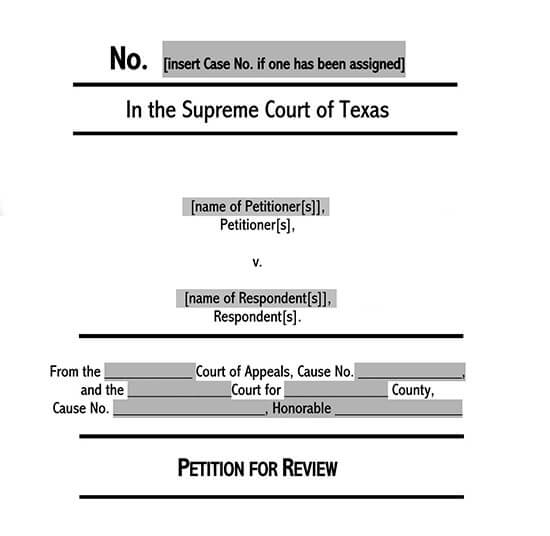
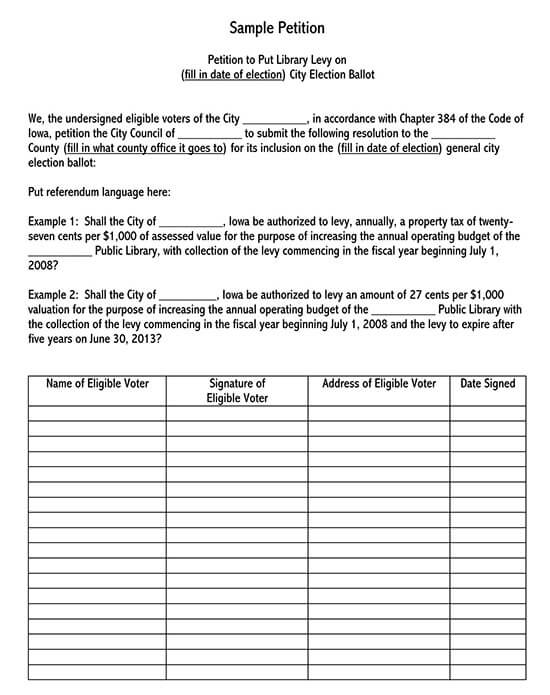
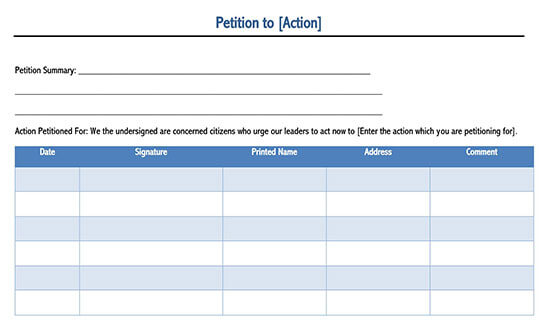
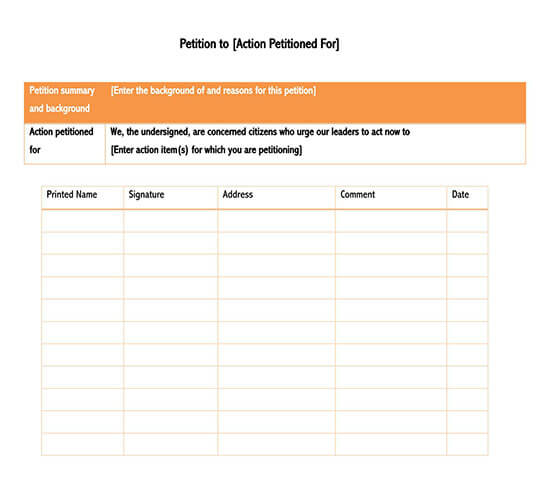
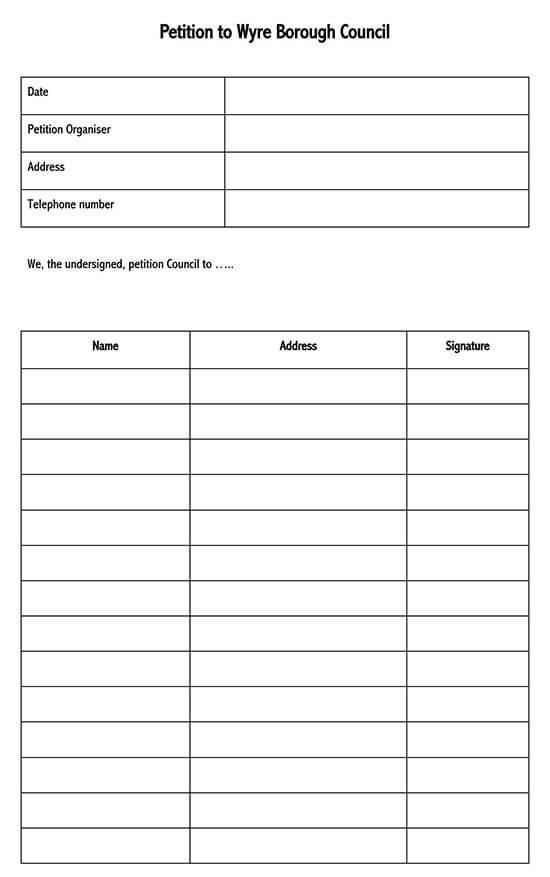
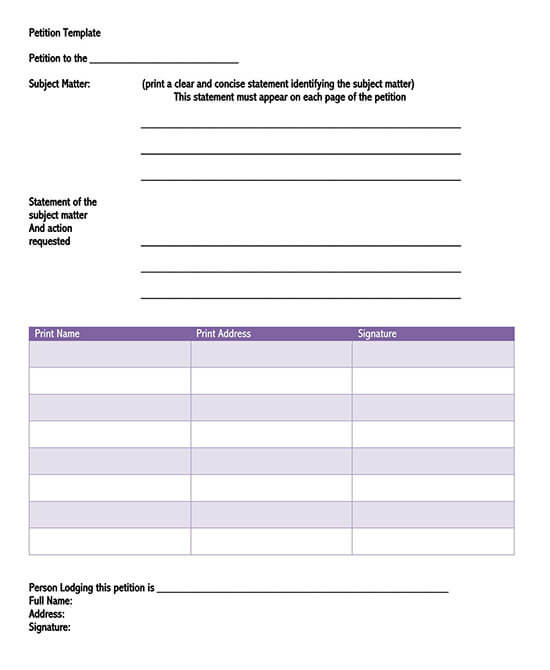
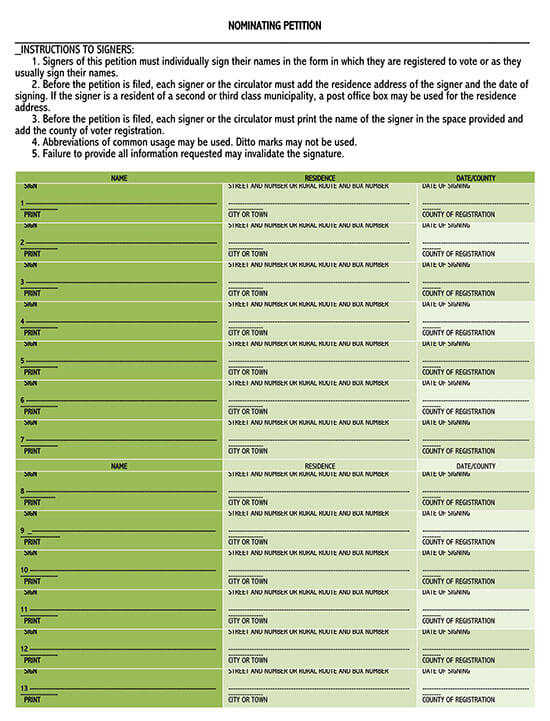
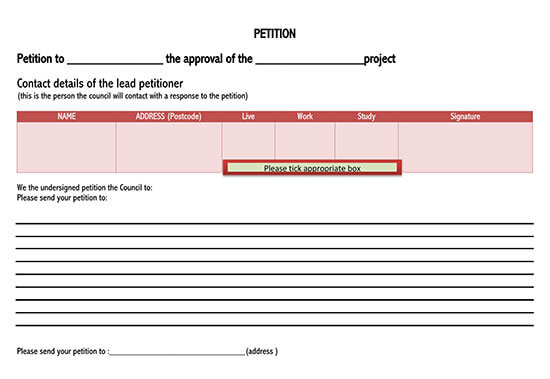
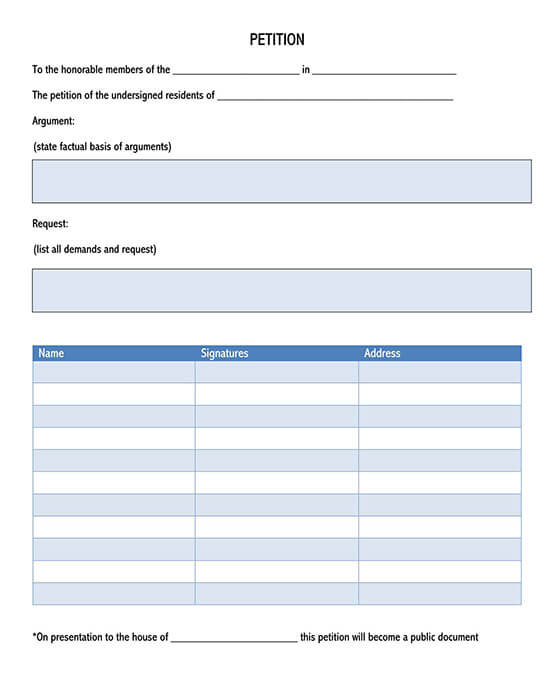
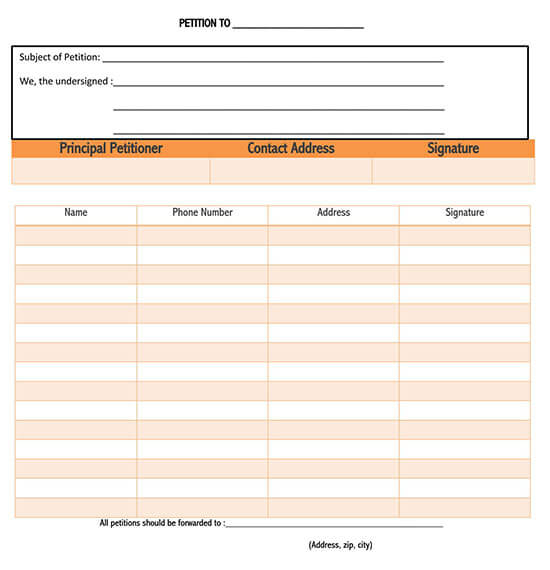
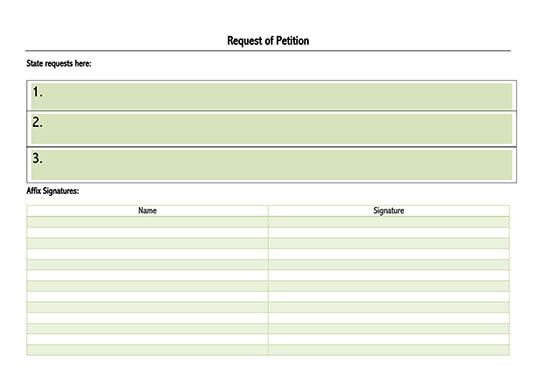
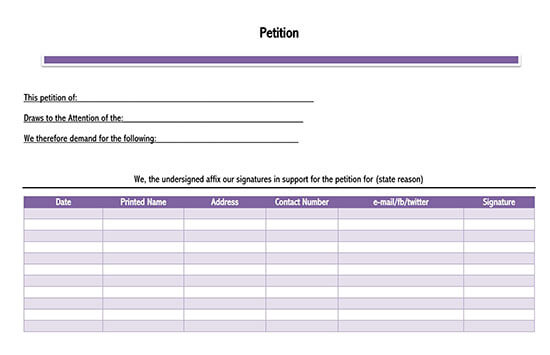
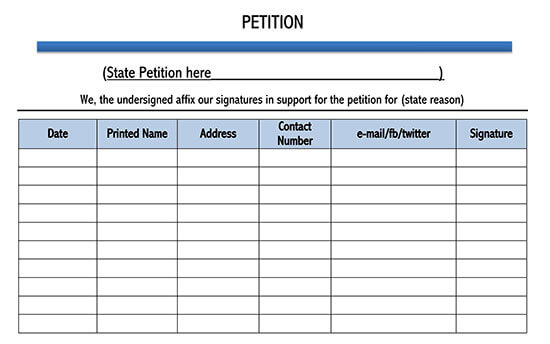
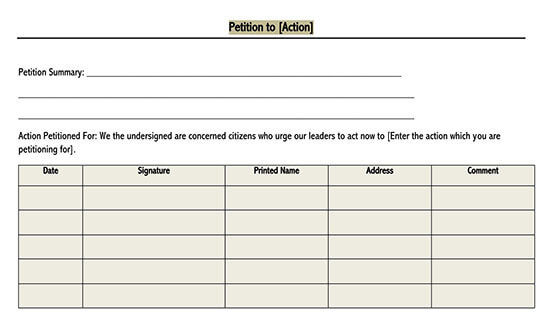
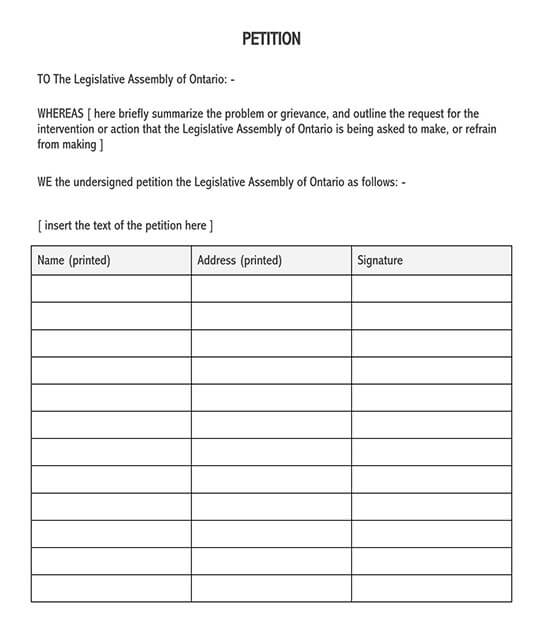
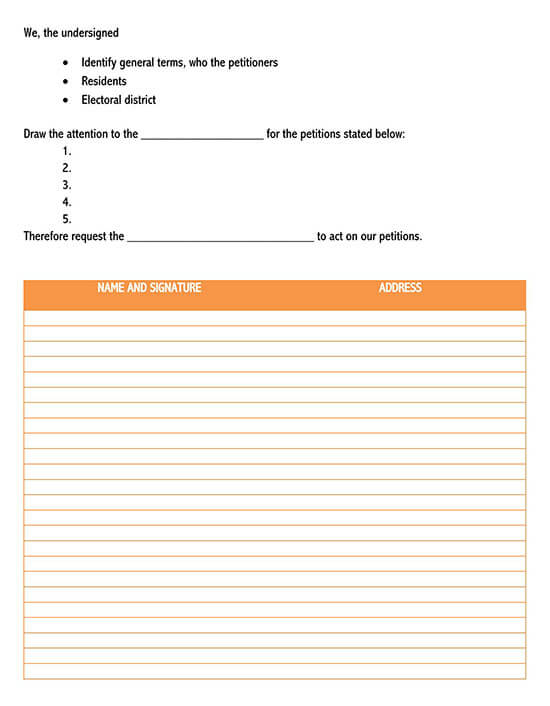
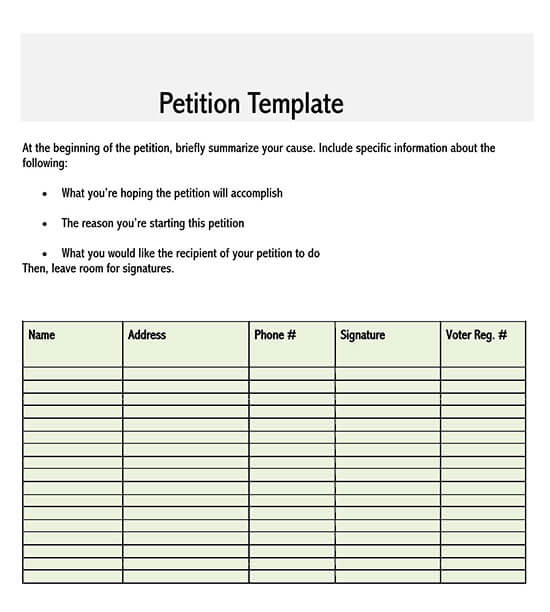
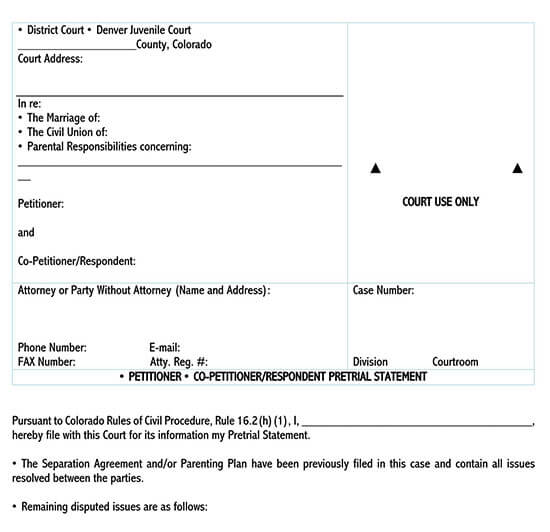
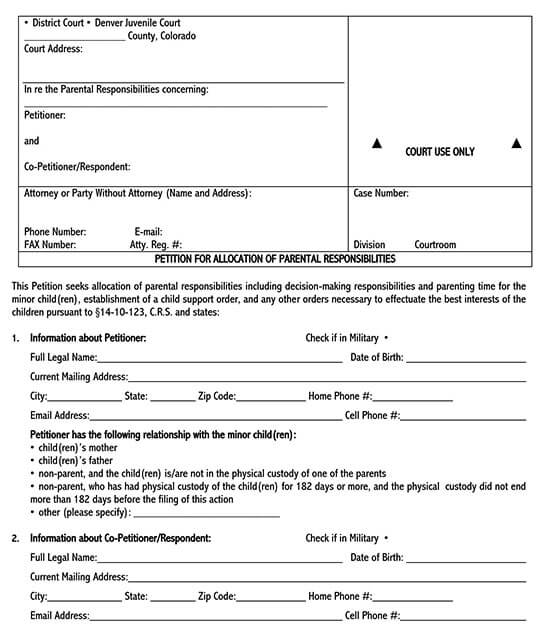
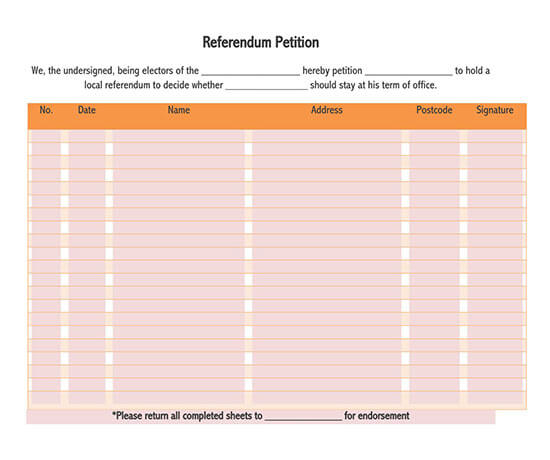
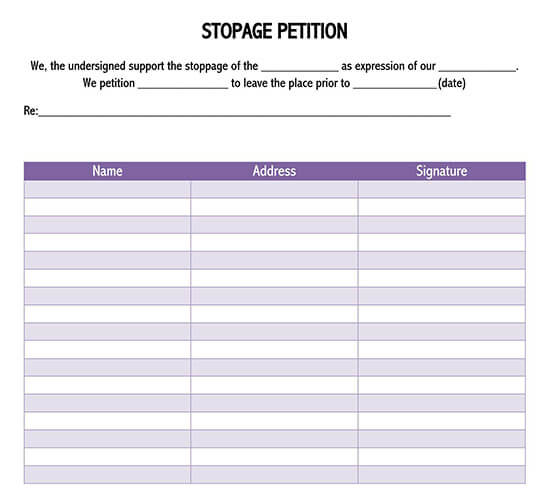
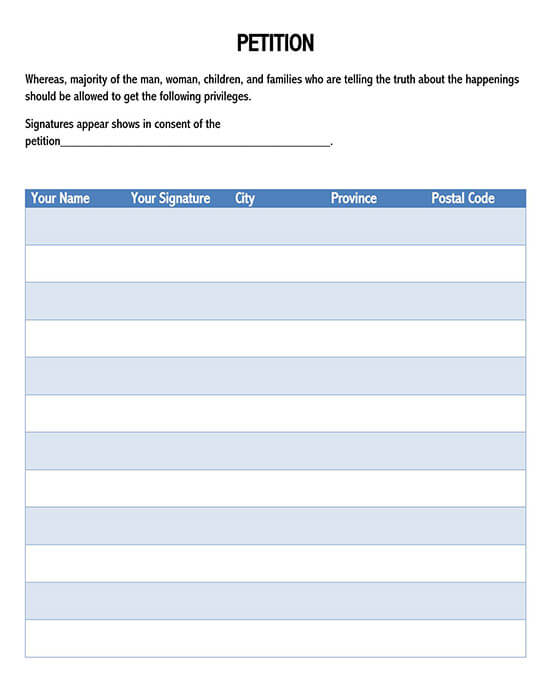
What are Petitions?
A petition is an official request for action written to an individual public office holder of a government authority. Petitions normally relate to a single political issue and originate from one or several concerned members of the public.
Simply put, a petition can be defined as a formal request to a government/authority to help resolve a public issue or grievance. Public petitions, which are addressed to the House of Commons and presented to the House by its members, are one of the most direct ways in which the people can communicate to their parliament. Petitions are considered one of the oldest parliamentary forms of direct communication and a fertile seed of all proceedings of non-commons.
Today, petitions can be described as a vehicle for political input- a long-established right of expression and participation and a way of influencing legislation and policy-making. Due to their increasing popularity, they have also been considered a valued means of bringing public concerns to parliament’s attention.
When a Petition is Used?
Petitions serve different purposes. They can either be practical or symbolic. They can be viewed as a catalyst for change on their own or a step towards the right direction in the campaign journey.
Here are some of the reasons that state the importance of a petition:
Be the Voice of Change
After looking at the issues you would like to address and have now come up with a great petition, it is now time for you to get your voice heard. A petition is a great way of informing the public of some of the things that may be affecting them directly without them knowing or having no one to speak for them.
They help you find new audiences
Petitions can help you start conversations with new people and change how they view things. Collecting signatures on a petition template at your local market or in your area is a great opportunity for you to get feedback on your campaign in real-time, gauge the level of support that you have out there and plant the seeds of a new idea in their mind.
They take the role of an informal poll
In a business setup, for instance, a petition can be a great way for people to have conversations about the things that are affecting them. The petition can help the business management understand that its customers want them to take the necessary action or do something different.
Things to Consider Before Writing a Petition
The process of influencing change can be tough and daunting. For one to come up with a great petition guaranteed to influence change, there are things that they must first ask themselves, including:
- What is the problem that they are looking to solve?
- What solution are they proposing to the problem?
- How fast they want the change to take place?
- How they will convince their supporters to sign their petition template
- How big of a change are they asking for?
- Who will help them in their quest?
After you’ve gathered all the answers to these questions, you can then proceed to draft your petition.
What to Include In Your Petition
Before coming up with a petition, there are things that you must first put into consideration, including:
Researching your topic
You must first start by conducting thorough research on the things that you are looking to change and have a deeper understanding of all its aspects. If you truly want your petition to pass, this is a step that you must be very keen on. You can’t convince someone that something is bad or needs to be changed if you don’t have enough knowledge to back your claims.
Determine how many signatures you need
All states have a set number of signatures that one must collect on a petition template to put their petition into effect. Make sure to go through all your state laws to find out how many signatures you need to collect and set a plan on how you will collect them.
Come up with a statement of purpose
A petition statement of purpose is a short account of the issue that you are looking to address, usually placed on the top of the petition page. The statement is meant to help the people signing the document understand what the petition is all about. After determining what you are looking to solve with your petition, come up with a great petition statement that will help you gain the support, you need for your petition.
Add Supporting details
After researching and gathering all the facts about the issue at hand, it is now time for you to expound upon your cause. What are the exact things that you are looking to change? Answer this question by being as specific as possible when drafting your petition.
Make sure to also include the following:
- The nature of the problem at hand
- An explanation of why the issue needs to be resolved
- A call to action that will help address the issue
- Your suggestion of what needs to be done
Ensure that you keep the petition template brief and easy to understand. You want anyone going through the petition to grasp what you are proposing on the go. Use simple language and don’t delve too much into the technicalities of the petition.
Tips for Writing a Great Petition
Keeping in consideration the following tips will ensure that your petition turns out to be as efficient as ever:
- Formatting: use the standard 8’1/2” x 11” inch paper for petition template. Use a standard font that one can easily read, e.g., Calibri or Times New Roman.
- Title: Come up with a great title for your petition – one that everyone can be able to comprehend on the go.
- Statement of Purpose: You want everyone signing the petition template to have a clear understanding of what they are signing, i.e., the issue at hand and your proposed solution. Include your petition’s statement of purpose at the very top of each page to help your audience better understand what they are signing.
- Blank lines: leave some blank lines on petition template for those reading the petition to provide their information. Some of the information that they should include in the petition include, their official name, their address, and contact information
Additionally;
- Keep the petition short and direct to the point
- Ensure that your petition template is clear and easy to comprehend
- Specify what the issue is and give your proposal on how to solve it
- Start with the general principles and make your way through the issue by getting more specific
- Create a great narrative, i.e., one that is more personal and believable
- Target the people who are directly influenced by the issue
- Reach out to the right people to help your petition gain more ground
Steps to Follow After Writing a Petition
Following the steps enlisted below after you have prepared your petition will help you attain the purpose of the petition:
- Look for volunteers to help you in the collection of signatures
- Schedule a campaign briefing for volunteers so that they can respond to any queries
- Have enough copies for your petition template. Ensure that you have enough copies to give around.
- Make a large sign if you are petitioning on the streets to make it easy for people to understand what you are doing.
- If you will be sharing your petition template online, make sure to cover all the bases. Make sure to remind your followers to click on the link or visit your page to see the petition.
- Set a date for when paper petitions must be returned to the authorized parties. When setting the date, make sure that you give yourself enough time to follow up on those who haven’t submitted the petition.
- Photocopy the returned paper petitions. Make sure that you photocopy all the signed petitions and keep them in a safe place to present as evidence if needed
- Approach people nicely. Don’t force anyone to sign the petition, instead try and convince them why you believe the changes will benefit them. Be polite and treat everyone with respect when soliciting signatures.
FAQs
Each state has a specific number of signatures that one must collect to put their petition into effect. Make sure to go through all your state laws to find out how many signatures you need to collect and set a plan on how you will collect them.
Petitions are legal documents used to inform the concerned parties that a lot of people feel a certain way about something. They, however, do not have any legal requirements for the party signing it.
There are several things that you can do to make your petition go viral, including:
Sharing your petition with the world, emailing everyone you know, use social media to spread the petition, and join online group chats to share it on forums
Petitions are a great way for people to make changes in their societies. With comprehensive research on the issues that they are looking to change, support from the people the change is to affect, and determination, one can be able to see their petition through to impart the change that they so much desire.




